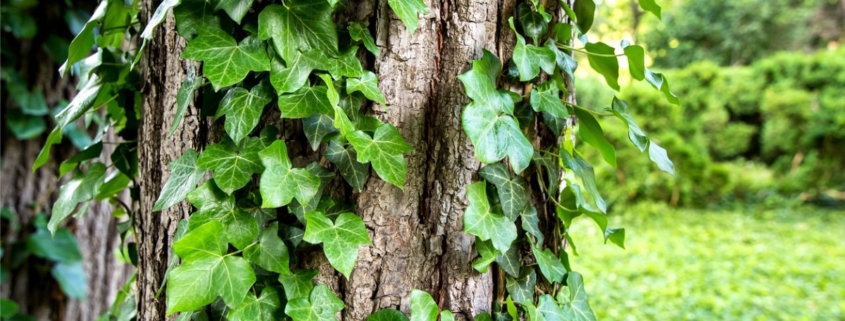How and Why Ivy Is Damaging to Your Trees (and What to Do About It)
Ivy may be a plant associated with the pinnacle of academia, but an ivy league is certainly not something you’d want to find in your yard. The ornamental climbing plant can wreak havoc on your other plant life, including your trees. Here’s what you should know about the risks of this relentless vine and what you can do about it:
Does Ivy Damage Trees?
Ivy can have certain benefits to wildlife, including shelter for small species. Yet, it also has the potential to overtake an entire mature tree. The vine damages bark as it climbs, using the outer layer as a scaffold for climbing and adding extra weight. It will also siphon resources like nutrients and water from the soil, taking them away from the tree. With a thick enough coating, ivy can also hold damaging agents like fungal spores close to the bark, leading to disease or decay.
Ivy makes its way up the tree in an attempt to get closer to the light. When it reaches the canopy, it can shield the tree’s leaves from sunlight and inhibit photosynthesis. As a result, it may ultimately overtake the foliage and kill the tree off slowly.
How to Remove Ivy from Trees
Clearly, ivy is an issue even for the healthiest of trees, and it’s got to go. But before you start stripping the vines away from your bark, stop and read this first!
Ivy stems become affixed to the bark of your tree so strongly that they can take it with them if you pull it off with too much force. This creates an opening in the protective exterior layer of your tree, leaving the vulnerable interior open to damage from pests, disease, and other forms of destruction.
Instead of removing ivy with a hard pull, you’ll want to sever all of the vines growing up your tree’s trunk. Cutting the band of stems around the trunk’s base will separate the climbing vine from its roots. Over time, this will cause the ivy to wither and die. Simply leave the vine in place after it dies, as it won’t cause any further damage to the tree and the leaves will eventually fall off.
How to Prevent Ivy from Returning
Of course, the best approach to take when it comes to ivy is a preventive one. If you’ve already had it, however, chances are you have an ideal environment for the problem plant to thrive. This means you’ll want to take extra caution to keep it from returning.
After you’ve severed the vines, check back continuously to make sure there are no new ivy sprouts at the base of your tree. One effective way to deter this and other unwanted weeds is to lay mulch. The material will lock in nutrients around your tree’s roots while also preventing any sprouts from getting enough sunlight to thrive. But these are just a few of the benefits of mulching around your trees’ base, as it can also help to prevent fungi and other problems while promoting temperature maintenance.
Whether you’re nurturing a damaged tree back to life or handling decaying branches, Premier Tree Solutions can solve all of your tree woes. Our team specializes in pruning, storm damage response, and tree removal, among other tree care services. Call us at 404.252.6448 to schedule a service or send us a message online.










